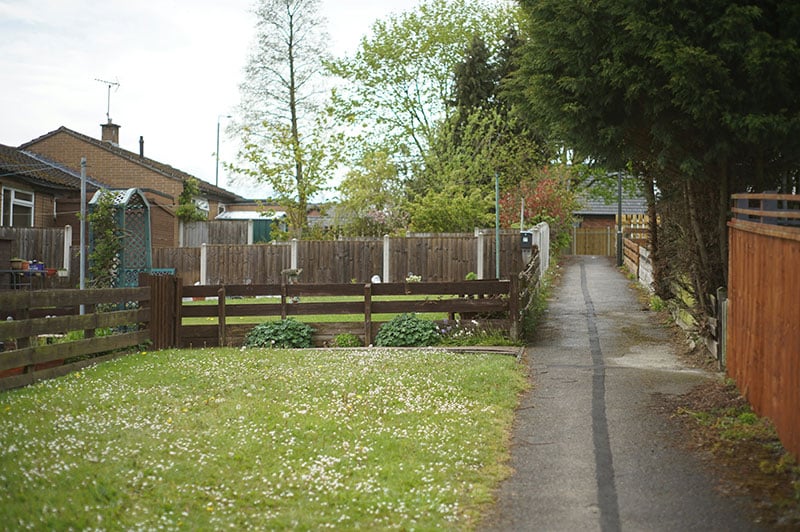How to Protect Tenants' Health During Asbestos Removal in UK Social Housing
While asbestos was banned in the UK in 2000, homes built before then commonly used asbestos in a number of materials, from the exterior to the interior and in numerous applications.
Today, many social housing buildings in the UK still contain asbestos, which poses a risk to contractors, employees and residents. Asbestos exposure is extremely dangerous, as it can lead to life-threatening and fatal diseases like asbestosis, lung cancer, and mesothelioma.
Unfortunately, many social housing buildings are older and require repair, which increases the risk of asbestos exposure. As asbestos-containing materials (ACMs) and building elements break down over time, they’re more likely to release dangerous fibres into the air.
While remediation and removal processes can eventually establish a safe home for tenants, protecting their health during the removal process is necessary. Many tenants may not have anywhere to go while work is carried out, but staying in the building isn’t always an option.
In this article, we’re going to discuss the unique aspects of asbestos removal regarding social housing, including if and when temporary relocation is necessary for safety purposes.

What are the legal and regulatory requirements when removing asbestos from social housing?
The Control of Asbestos Regulations 2012 (CAR 2012) covers the rules and regulations regarding asbestos work, including removal jobs. It’s necessary to refer to these laws when determining how to remove damaged or disturbed ACMs from a social housing property.
CAR 2012 clarifies when a licensed contractor is required for removal work, how to protect workers from exposure while performing asbestos work, how to properly dispose of asbestos waste, and more.
By neglecting to follow the regulations set forth by CAR 2012, dutyholders and others in charge of social housing can face high fines or even, in some cases, jail time. Additionally, not following best practices puts everyone in danger of inhaling or ingesting toxic asbestos fibres.
While ACMs in good condition don’t pose a threat, when an ACM is disturbed in some way, it can release microscopic toxic fibres that can be unknowingly inhaled or swallowed.
Who is responsible for asbestos management in social housing?
In the UK, tenants can rent social housing from a not-for-profit housing organisation or the local council. In these cases, the organisation or local council acts as the tenant’s landlord. That makes them responsible for ensuring tenants have a safe environment to live in, including remedying any asbestos risks.
According to the Health and Safety Executive (HSE), the person with a duty to manage asbestos in a commercial building, otherwise known as the dutyholder, can be the building owner, landlord, or organisation responsible for the building’s maintenance.
In addition to the dutyholder, others who are responsible for maintaining a safe social housing building may include:
- Building owner
- Dutyholder’s assistant
- Other appointed assistants
- Managing agents
Is there training available for social housing landlords?
The UK Asbestos Training Association (UKATA) — the leading association for asbestos training — has a Duty To Manage Asbestos for the Housing Sector course to help dutyholders stay compliant. The course goes over the duty to manage asbestos as well as legislative requirements that must be met.
The course requires a Training Needs Analysis to be carried out first to ensure the client gets the specific training needed for their situation.
How should asbestos removal be planned in social housing?
Managing the risk of asbestos in social housing buildings includes doing the following:
- Conducting routine asbestos surveys to check the status of intact ACMs
- Developing a management plan to keep ACMs safe and prepare for an unexpected emergency
- Organising the removal of ACMs that pose an exposure risk
It’s important to hire licensed asbestos contractors to conduct professional surveys and come up with a detailed removal plan. That’s the only way to ensure the social housing building remains safe during and after the removal project.
What is the best way to communicate with tenants?
It’s important that tenants understand the basics of asbestos safety, including the types of materials that may contain asbestos and what to do if they suspect any ACMs have been disturbed. When they know what to look out for, social housing residents can help dutyholders address any problems that arise.
Make it clear to tenants that they should report damaged or deteriorating building materials, whether or not they know for sure that they contain asbestos.
Furthermore, tenants should know what is and is not allowed in terms of asbestos safety. For example, if the walls of the social housing building contain asbestos, tenants should be advised not to drill into the walls.
Communicate to tenants via posted notices, email and community meetings. Also, make sure that your tenants know that they can ask about the building’s asbestos situation or discuss their concerns at any time. Let them know the best way to contact you, and also consider setting up a reporting process that tenants can use 24/7 for emergencies.
How can tenants be protected during asbestos removal?
Asbestos experts know the many ways to keep building occupants safe while a removal project is taking place. Safety practices used include:
- Prioritising containment to keep asbestos fibres in one area and prevent spread and exposure
- Closing off work areas to ensure ACMs don’t become further damaged and tenants don’t inhale toxic fibres
- Monitoring air quality during the removal work and after removal to ensure the area is safe for occupancy
CAR 2012 details how to ensure safe asbestos removal to prevent building occupants from inhaling asbestos fibres. Adhering to legal guidelines is the best way to ensure everyone stays safe.
What precautions should removal contractors take?
Similarly, removal contractors must also prioritise their safety while working with asbestos. Safety methods include:
- Using appropriate personal protective equipment (PPE), including respiratory protective equipment (RPE)
- Adhering to safety protocols and regulations learned through training and outlined by CAR 2012 and the HSE
- Properly sealing and transporting asbestos waste to prevent further spread and contamination
Following procedures like the ones above keeps workers safe while continuing to maintain a safe environment for tenants and anyone else in the building.
When should tenants be temporarily located?
Social housing tenants aren’t legally required to be relocated while asbestos repair work takes place.
However, if the work will result in asbestos dust that tenants cannot reasonably avoid, the landlord may have an ethical or legal requirement to relocate them, as it’s their responsibility to manage asbestos and building safety. Knowingly allowing tenants to be exposed to toxic fibres is a breach of that duty.
Containment work, however, does not usually create more asbestos dust, as the goal is to conceal existing ACMs to prevent the release of more fibres. Also, some removal work may take place in a part of the building that isn’t occupied and can be sealed off from tenants. In these cases, relocation may not be necessary.
It’s important for landlords to determine whether or not tenants should be rehoused before asbestos work begins. If the landlord fails to rehouse tenants, they could be sued by the tenants for failing to take necessary precautions.
What steps should be taken after asbestos removal?
Following asbestos removal, there are a number of steps that contractors take to ensure the building is safe for occupancy. Those include:
- Conducting thorough post-removal inspections to confirm the absence of problematic ACMs
- Cleaning and restoring affected areas to remove asbestos dust from surfaces and the air
- Providing clear communication to tenants about what’s been done and the plan moving forward
- Sharing inspection information and air quality test results
- Offering ongoing support and addressing any concerns as they arise
Communicating these processes and results can reassure tenants that their home is safe to live in.
What are the best practices for long-term asbestos management?
Removing ACMs once is not enough to keep social housing occupants safe in the future. There are a number of steps that need to be taken to ensure ongoing asbestos management, including:
- Conducting regular inspections and monitoring for potential asbestos issues
- Maintaining an updated asbestos management plan and asbestos register
- Minimising the potential for ACM disturbance by educating tenants and preventing access to certain areas
- Posting signs where ACMs are present to keep people from disturbing them
- Regularly training staff and educating tenants about asbestos safety and emergency procedures
Following best practices is the only way to manage asbestos long-term, which is necessary for maintaining safety and staying compliant.
Final thoughts about asbestos removal from social housing
Asbestos in social housing buildings should be taken seriously, and it’s an issue that needs the support of housing providers and the government to address. While asbestos has been banned in the UK for decades, there’s a lot that needs to happen to make older buildings safe for workers and residents.
A proactive approach by dutyholders and tenants is the best way to manage the risk of asbestos exposure and ensure everyone’s safety.
To speak with an asbestos expert about surveys and removal, contact Oracle Solutions today.

Written by Brendan Coleman
Brendan Coleman, with decades of experience in the asbestos industry, is a dedicated Quality Manager. Certified as a surveyor and analyst, he is adept in operations and quality management with a keen focus on HSE compliance. His expertise is pivotal in maintaining high safety and efficiency standards. Brendan ensures our UKAS accreditation requirements are consistently met and exceeded, upholding stringent standards in asbestos remediation. His commitment to enhancing quality and customer satisfaction makes him an essential advisor in asbestos management.
